“Ang hindi marunong lumingon sa pinanggalingan ay hindi makararating sa paroroonan.”
— José Rizal
Brian and I are in Madrid this week, and we found ourselves walking through the heart of Madrid, not as tourists, but as Filipinos retracing the path of a man who dared to imagine a different future. José Rizal lived, studied, and wrote in this city.
We explored the places where he drank with his friends, the cramped spaces where he drafted his novels. For us, walking his walk was part history, part colonial memory. In many ways, it was a reminder that the seeds of revolution weren’t planted in the Philippines alone.
Madrid stoked the fires of Rizal’s determination. Walking those same streets made it clear that our work at Dear Flor to amplify culture, reclaim space, and tell stories is part of that same legacy.
Mapping our Cultural Memory
Before Noli me Tangere, El Filibusterismo, and the gunshots at Bagumbayan, Rizal was here.
He arrived in Madrid in 1882. His existence in the city had him moving between rented spaces, hanging out in lecture halls, studying painting, and grabbing drinks at Viva Madrid.
We followed the official Rizal’s Madrid walking tour created by the Philippine Embassy and visited some of the most significant stops in his life:
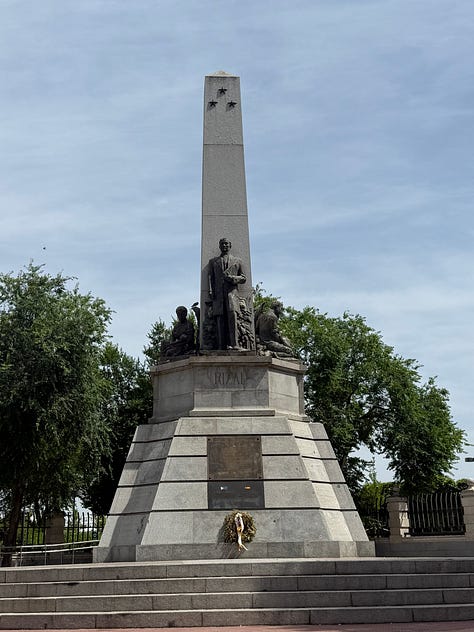





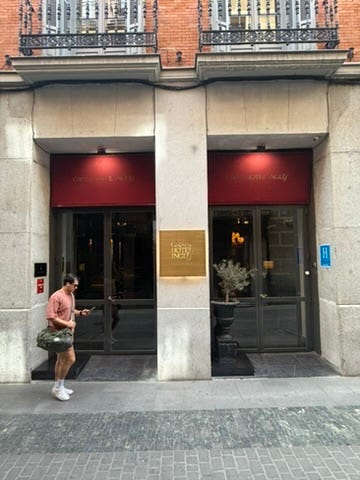
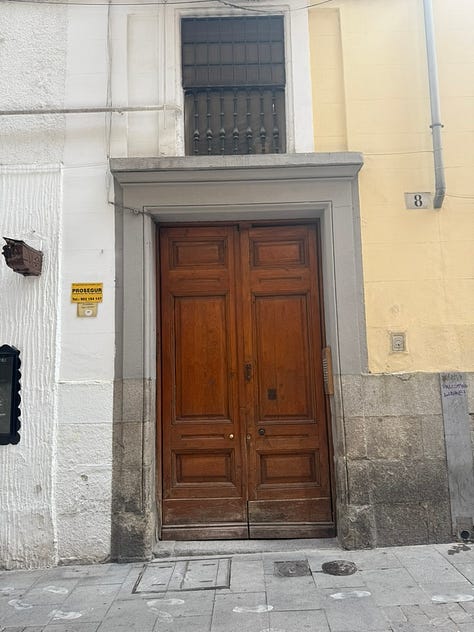

Plaza Santa Ana Once the social and cultural hub for Rizal and the Filipino expatriate community. Plaza Santa Ana is surrounded by historic cafes and theaters. It's here where conversations, flirtations, and nation-building took root. Begin your journey by standing in the square where Rizal and his peers once debated politics and poetry.
Ateneo de Madrid — Calle del Prado 21 Not a university, but an elite cultural institution where Rizal enriched his intellect. He studied English here under Sr. Schüts, attended poetry readings (including those of Ramón de Campoamor), and was once introduced to the Príncipe de Baviera. Though closed on Mondays, its neoclassical façade and literary history offer a glimpse into the mind of a young Rizal seeking more than academic degrees.
Calle Amor de Dios 13–15 Rizal’s first home in Madrid (Sept 1882–May 1883). He lived here with Vicente Gonzalez and survived on a tight budget of 35 pesos. This modest lodging, near both the university and his art atelier, boasted four mirrors and a piano—symbols of beauty and introspection.
Calle Fernández y González 8 A short stay from May to June 1883. Rizal roomed with Eduardo de Lete and Ceferino de Leon. They enforced a no-gambling policy. It’s also where Rizal criticized fellow Filipinos for idle chatter, choosing instead to read, write, and reflect.
Viva Madrid — Calle Manuel Fernández y González 7 Rizal’s go-to watering hole. Known for its vibrant tiled interiors (azulejos), Viva Madrid served as a light meal spot for Rizal and Graciano Lopez Jaena. Though closed Mondays, its facade is a testament to the colorful and social side of the propaganda movement.
Hotel Inglés — Calle Echegaray 8 Here in 1884, Rizal delivered his famous toast to Luna and Hidalgo after their historic win at the Exposición de Bellas Artes. This banquet marked a turning point in Filipino self-confidence.
Calle Atocha 43 Office of La Solidaridad, the reformist newspaper founded in 1889. Rizal’s essays, including La Indolencia de los Filipinos, were published here. In them, he countered colonial myths and laid out his vision for national progress through education, land reform, and infrastructure.
Retiro Park & Crystal Palace Rizal’s refuge and reflection space. This park inspired the name of his exile home in Dapitan (“Mi Retiro”). In 1887, the Palacio de Cristal hosted the Exposición de Filipinas—a human zoo of Filipino tribespeople Rizal denounced as inhumane. The Crystal Palace is currently closed, but its legacy remains a powerful symbol.
Escuela de Bellas Artes de San Fernando — Calle Alcalá While studying medicine, Rizal also took five hours a week of painting under Carlos de Haes here. This school cultivated his artistic sensibility and belief in multidisciplinary excellence. Nearby was the Facultad de Derecho, where he briefly studied law before shifting to Philosophy and Letters.
Congreso de los Diputados Formerly Las Cortes Españolas. Filipino reformists lobbied here for equal rights under Spanish law. Just across from Plaza de las Cortes and a Cervantes monument, the building is a symbol of the constitutional ideals Rizal aspired to engage.
Rizal Monument — Av. de las Islas Filipinas / Calle Santander Unveiled in 1996, this monument is a replica of the one in Luneta, Manila. For decades Spain refused to honor Rizal. But in time, his intellect, sacrifice, and influence on global anti-colonial thought earned him this place of recognition—on the very soil where he once dreamed, studied, and struggled. The Rizal Monument isn’t close to the usual Madrid tourist spots, but it’s worth the trek.
The Revolution Isn’t Over
Rizal’s revolution started with words. And while our fight today looks different, our spirit is the same: we make art, we build businesses, we raise families who know their roots. We wear our ternos loud. We cook with heirloom recipes and dream up new ones. We take up space in boardrooms, on stages, at dispensaries, in studios. We name our flavors, our futures, and ourselves.
We choose joy deliberately, publicly, and without apology, and by doing so, we’re doing what Rizal did: we assert our right to belong.
The revolution didn’t end at Bagumbayan. It’s alive in everything we create and it’s happening now.
A Toast to the Revolution
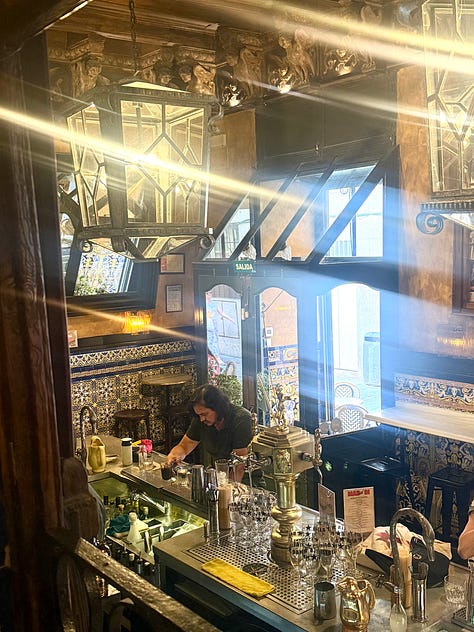
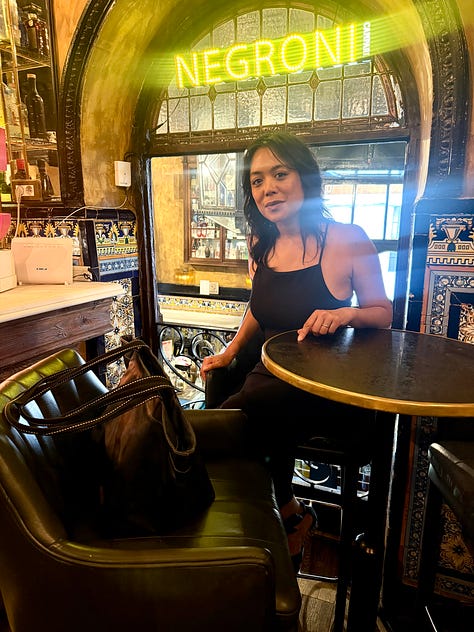

We ended our walk at Viva Madrid, a historic bar tucked into the same streets Rizal once roamed. We raised a glass to him, to every revolutionary who came before us, and to everyone still carrying the torch today.
At Dear Flor, we’re honoring Rizal’s legacy the only way we know how: with bold flavors, sweet resistance, and joyful rebellion.
Take 20% off all gummies, no code necessary. Consider it a small but delicious act of defiance. Sale ends Sunday, June 29 at midnight PT.
We’re not here to fit in.
We’re here to flavor the future—one revolutionary bite at a time.
🛒 Shop Now





So cool! I did a walking tour of Madrid with Quino de Jesus when I went June 2024 and he showcased some of these places with historical commentary. It's incredible how Rizal and his compatriots' presence is felt up to this day.